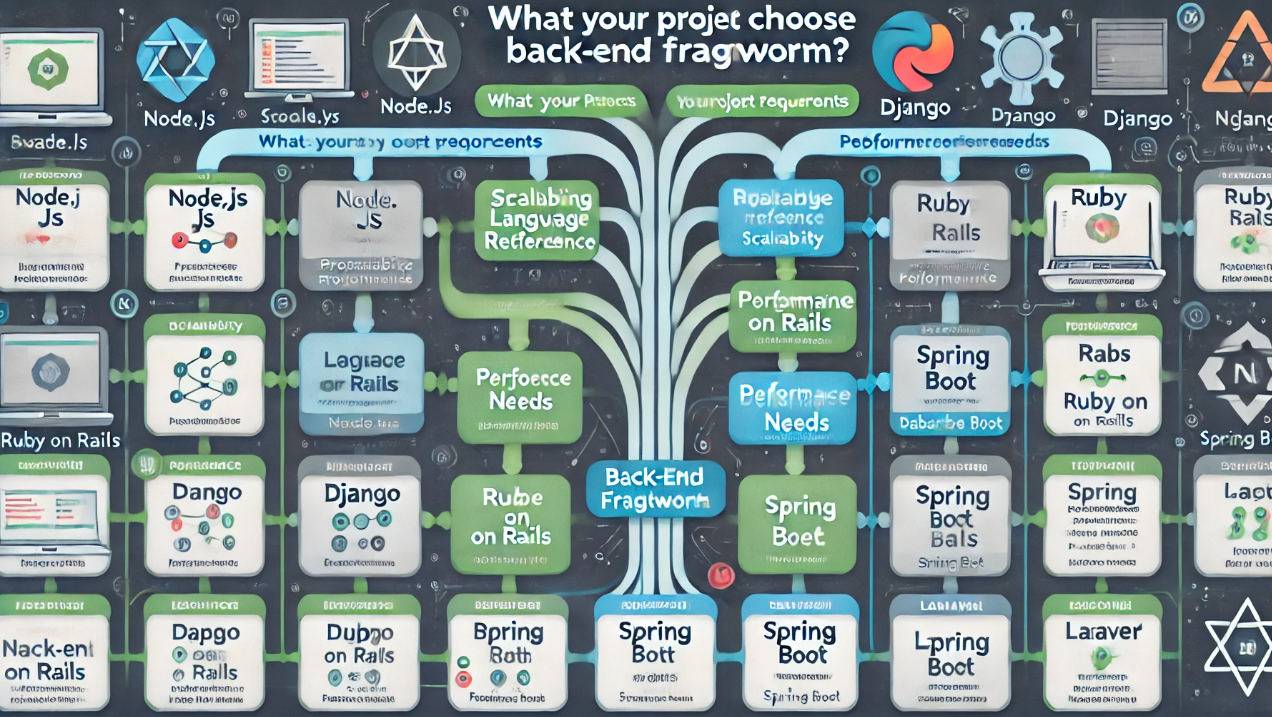️ How to Choose the Right Tech Stack for Your Web App
Introduction
Choosing the right tech stack for your web app is one of the most crucial decisions in development. The front-end, back-end, database, and infrastructure determine your app’s performance, scalability, security, and maintainability.
But with so many options, how do you choose?
What This Guide Covers:
✅ What is a tech stack?
✅ Front-end & back-end frameworks comparison
✅ Factors to consider when choosing a tech stack
✅ Best tech stacks for different types of web apps
By the end, you’ll know exactly which technologies best fit your project!
1. What is a Tech Stack?
A tech stack is the combination of programming languages, frameworks, databases, and tools used to build a web application.
Key Components of a Web App Tech Stack
| Component | Purpose | Examples |
|---|---|---|
| Front-End | User Interface (UI) & User Experience (UX) | React, Angular, Vue.js |
| Back-End | Server-side logic & APIs | Node.js, Django, Ruby on Rails |
| Database | Store and manage app data | PostgreSQL, MongoDB, MySQL |
| Hosting & DevOps | Deployment & server management | AWS, Vercel, Firebase, DigitalOcean |
✅ Result? A well-chosen tech stack ensures faster development, better scalability, and long-term maintainability.
2. Choosing the Right Front-End Technology
The front-end determines how your web app looks and feels. It should be fast, responsive, and user-friendly.
Top Front-End Frameworks & When to Use Them
| Framework | Best For | Pros | Cons |
|---|---|---|---|
| React.js | Scalable SPAs, Dashboards, SaaS | Large community, reusable components | Steep learning curve |
| Vue.js | Lightweight apps, MVPs, startups | Simple syntax, easy learning | Smaller ecosystem |
| Angular | Enterprise apps, large-scale projects | Strong architecture, built-in tools | Heavy & complex |
| Svelte | Performance-focused apps | No virtual DOM, fast | Smaller adoption |
Which One to Choose?
✔️ React.js – Best for most modern web apps.
✔️ Vue.js – Best for small, fast-loading apps.
✔️ Angular – Best for large enterprise applications.
✔️ Svelte – Best for performance-critical apps.
✅ Pro Tip: If building a mobile-friendly web app, consider React Native or Flutter.
️ 3. Choosing the Right Back-End Technology
The back-end processes user requests, manages databases, and handles security.
Top Back-End Frameworks & When to Use Them
| Framework | Best For | Pros | Cons |
|---|---|---|---|
| Node.js (Express.js, Nest.js) | Real-time apps (chat, streaming) | Fast, non-blocking, scalable | Callback complexity |
| Django (Python) | AI-driven apps, fintech | Secure, batteries-included | Monolithic |
| Ruby on Rails | MVPs, startups | Fast development, convention-over-configuration | Slower performance |
| Spring Boot (Java) | Enterprise apps | High performance, robust security | Verbose code |
| ASP.NET (C#) | Microsoft-based solutions | Enterprise-grade security | Windows-centric |
Which One to Choose?
✔️ Node.js – Best for real-time applications & scalable back-ends.
✔️ Django – Best for secure, AI-powered web apps.
✔️ Ruby on Rails – Best for fast MVP development.
✔️ Spring Boot – Best for high-performance enterprise applications.
✔️ ASP.NET – Best for Microsoft-based solutions.
✅ Pro Tip: Choose a language your team is comfortable with to speed up development.
4. Choosing the Right Database
A database stores and retrieves your app’s data. Choosing between SQL & NoSQL depends on your app’s structure.
SQL vs. NoSQL – Which One Should You Use?
| Type | Best For | Examples |
|---|---|---|
| SQL (Relational DB) | Structured data (e.g., transactions) | PostgreSQL, MySQL, Microsoft SQL Server |
| NoSQL (Document-Based DB) | Flexible, fast-growing data | MongoDB, Firebase, CouchDB |
Which One to Choose?
✔️ Use PostgreSQL or MySQL for structured data (e-commerce, banking).
✔️ Use MongoDB or Firebase for flexible, fast-growing apps (social media, real-time apps).
✅ Pro Tip: Use Redis for caching to improve performance.
☁️ 5. Choosing Hosting & DevOps Infrastructure
How will you deploy, scale, and manage your app?
| Hosting Option | Best For | Examples |
|---|---|---|
| Cloud Providers | Scalable, global apps | AWS, Google Cloud, Azure |
| Serverless Platforms | Low-maintenance deployments | Firebase, Vercel, Netlify |
| Containerized Solutions | Apps requiring high flexibility | Kubernetes, Docker |
Which One to Choose?
✔️ Use AWS/GCP/Azure for scalable cloud hosting.
✔️ Use Vercel/Netlify for serverless, front-end hosting.
✔️ Use Kubernetes/Docker for containerized apps.
✅ Pro Tip: Use CI/CD pipelines (GitHub Actions, Jenkins) for automated deployments.
6. Best Tech Stacks for Different Types of Web Apps
E-Commerce Web App
- Front-End: React.js + Next.js
- Back-End: Node.js + Express.js
- Database: PostgreSQL + Redis
- Hosting: AWS or Vercel
Real-Time Chat / Streaming App
- Front-End: Vue.js
- Back-End: Node.js + WebSockets
- Database: MongoDB + Firebase
- Hosting: DigitalOcean + Kubernetes
️ SaaS Application
- Front-End: React.js + TypeScript
- Back-End: Django (Python)
- Database: PostgreSQL
- Hosting: AWS + Docker
Mobile-Friendly PWA (Progressive Web App)
- Front-End: Svelte + Tailwind CSS
- Back-End: Firebase Functions (Serverless)
- Database: Firestore (NoSQL)
- Hosting: Vercel
✅ Pro Tip: Always choose scalable technologies that support future growth & feature updates.
Final Thoughts: Choosing the Best Tech Stack
For MVPs & Startups: Choose a fast-to-deploy stack (e.g., React + Firebase).
For Enterprise Apps: Use scalable, secure solutions (e.g., Java/Spring Boot + PostgreSQL).
For Real-Time Applications: Go with Node.js & WebSockets for low latency.
Final Recommendation:
✅ Prioritize scalability, security, and maintainability.
✅ Pick technologies your team is comfortable with.
✅ Plan for future growth (avoid vendor lock-in).
The right tech stack = High performance, low costs & long-term success!
Would you like a detailed comparison of React, Vue, and Angular? Let me know! ️

